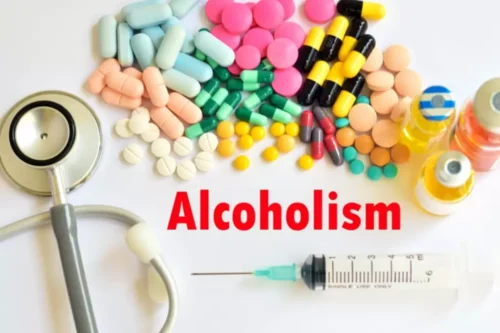Alcoholic Cardiomyopathy: Causes, Symptoms, and Diagnosis

It is largely unknown which factors determine cardiac toxicity on exposure to alcohol. Additionally, echocardiographic data suggest that subjects who do not fully withdraw from alcohol consumption, but who reduce it to moderate amounts recover LVEF in a similar manner to strict non-drinkers. Thus, Nicolás et al[73] studied the evolution of the ejection fraction in 55 patients with ACM according to their degree of withdrawal. https://ecosoberhouse.com/ The population was divided into 3 groups according to their intake volume during the follow-up period. At the end of the first year, no differences were found among the non-drinkers, who improved by 13.1%, and among those who reduced consumption to g/d (with an average improvement of 12.2%). Conversely, those whose consumption remained in excess of 80 g/d showed an average decline of 3.8% in their ejection fraction.

How can I prevent this condition or reduce my risk?

A doctor can guide someone to resources to help them quit drinking and can make referrals. Other lifestyle changes a person will likely need to make include reducing the amount of fluid they drink or salt they eat. A person can speak with a doctor about any concerns regarding lifestyle changes. ACM can also induce a feeling of fatigue or a decrease in exercise tolerance. A person may not be able to withstand the amount of exercise or activity as they had previously. Alcoholic cardiomyopathy is best managed with an interprofessional approach with the involvement of primary care physician and cardiology.
- Alcoholic-dilated Cardiomyopathy (ACM) is the most prevalent form of ethanol-induced heart damage.
- The exact mechanism by which an increased adherence to the traditional Mediterranean diet exerts its favorable effects is not known.
- Alcoholic cardiomyopathy refers to dilated cardiomyopathy due to toxic origin with left-ventricle systolic dysfunction, dilatation of cardiac chambers, and ultimately progression to heart failure.
- Conversely, the 3 subjects recording a less satisfactory evolution had persisted in their consumption of alcohol.
- This can result in various symptoms, including fluid retention and episodes.
- Some studies have suggested that even moderation of alcohol consumption similar outcomes as compared to abstinence.
EFFECTS OF ALCOHOL WITHDRAWAL
The explanation proved to be the addition of small amounts of cobalt chloride. Cobalt was used as a foam stabilizer by certain breweries in Canada and in the USA. Cobalt poisoning and alcohol together acted synergistically in these patients. As the syndrome could be attributed to the toxicity of this trace element, the additive was prohibited thereafter.

Acute vs. chronic
Furthermore, there are conflicting data among studies regarding the prognosis of the condition, with some showing overall mortality near 60% and others showing a mortality rate of only 19% (Table (Table11). Despite these features, the structural changes do not seem to be specific, furthermore, they are not qualitatively different from those found in idiopathic DCM and they do not allow us to differentiate between the two conditions[44]. It also appears that the changes emerging in ACM patients only differ from idiopathic DCM in quantitative terms, with histological changes being more striking in idiopathic DCM than in ACM[44]. Additionally, the accepted ACM definition does not take into account a patient’s sex or body mass index (BMI). As women typically have a lower BMI than men, a similar amount of alcohol would reach a woman’s heart after consuming smaller quantities of alcohol. Data on the amount of alcohol consumption required to cause ACM are limited and controversial.
Pathological Aspects of ACM
To diagnose this condition, healthcare providers will alcoholic cardiomyopathy typically use several of the following methods.
Clinical work-up for alcoholic cardiomyopathy

Overall, your healthcare provider is the best source of information and answers when it comes to your recovery. The Centers for Disease Control and Prevention (CDC) defines heavy alcohol use — also known as heavy drinking — as more than eight drinks per week for women and more than 15 drinks per week for men. One drink is equal to 14 grams of pure alcohol, which can take many different forms because some forms have a higher concentration of alcohol than others. In his 1972 review article, Bridgen was the first to introduce the term alcoholic cardiomyopathy [27]. However, several pitfalls in the pathophysiology, natural history, diagnosis and risk stratification of this disease still exist.
This ethanol misuse at high consumption rates causes a variety of health problems, ethanol being the sixth most relevant factor of global burden of disease and responsible for 5.3% of all deaths [5]. Despite this clear epidemiological evidence of ethanol’s unsafe consumption and increased health risk, results of consumption policies are not effective enough. Therefore, the need to establish a more effective control on ethanol consumption has been repeatedly claimed [2]. New therapeutic strategies for AC are being developed with the support of animal models.
Is there an immediate risk of alcohol intake?
This substance is a potent inhibitor of the enzyme acetaldehyde dehydrogenase, so it increases the presence of acetaldehyde, and it promotes its effects.48,50 The harmful effects of this substance have been found to be exerted at various levels, in both animal and human models. Cardiac remodeling is a global process that myocardium establishes as a result of different aggressions [31,132]. Heart myocytes are relatively resistant to the toxic effect of ethanol, developing a functional and structural compensatory mechanism able to minimize or repair the ethanol-induced myocyte damage [20,31,39]. Structurally, hypertrophy of myocytes is seen in the early stages to avoid contractile depression [52,107,125].
History and Physical
In general, most people who stop drinking alcohol will feel better over the next three to six months. However, certain symptoms may start to improve even sooner, depending on treatments and the severity of your case. In more severe or complicated cases, especially ones involving surgery, some symptoms may not improve for even longer.
Enhancing Healthcare Team Outcomes
However, during the time that these haemodynamic changes appeared, some researchers identified a possible decrease in the ejection fraction and other parameters related to systolic function[32-39]. This was questioned by other authors, who pointed out that these conclusions could not be drawn, as alcohol itself also induces changes in the pre-load and after-load conditions, which influence cardiac contractility[35]. However, in this context, experimental in vitro studies using cardiomyocytes have shown that alcohol depresses the contractile capacity of the myocardium, regardless of the sympathetic tone and the haemodynamic conditions[36]. Therefore, complete abstinence from ethanol is the most useful measure to control the natural course of ACM [51,56,135].

